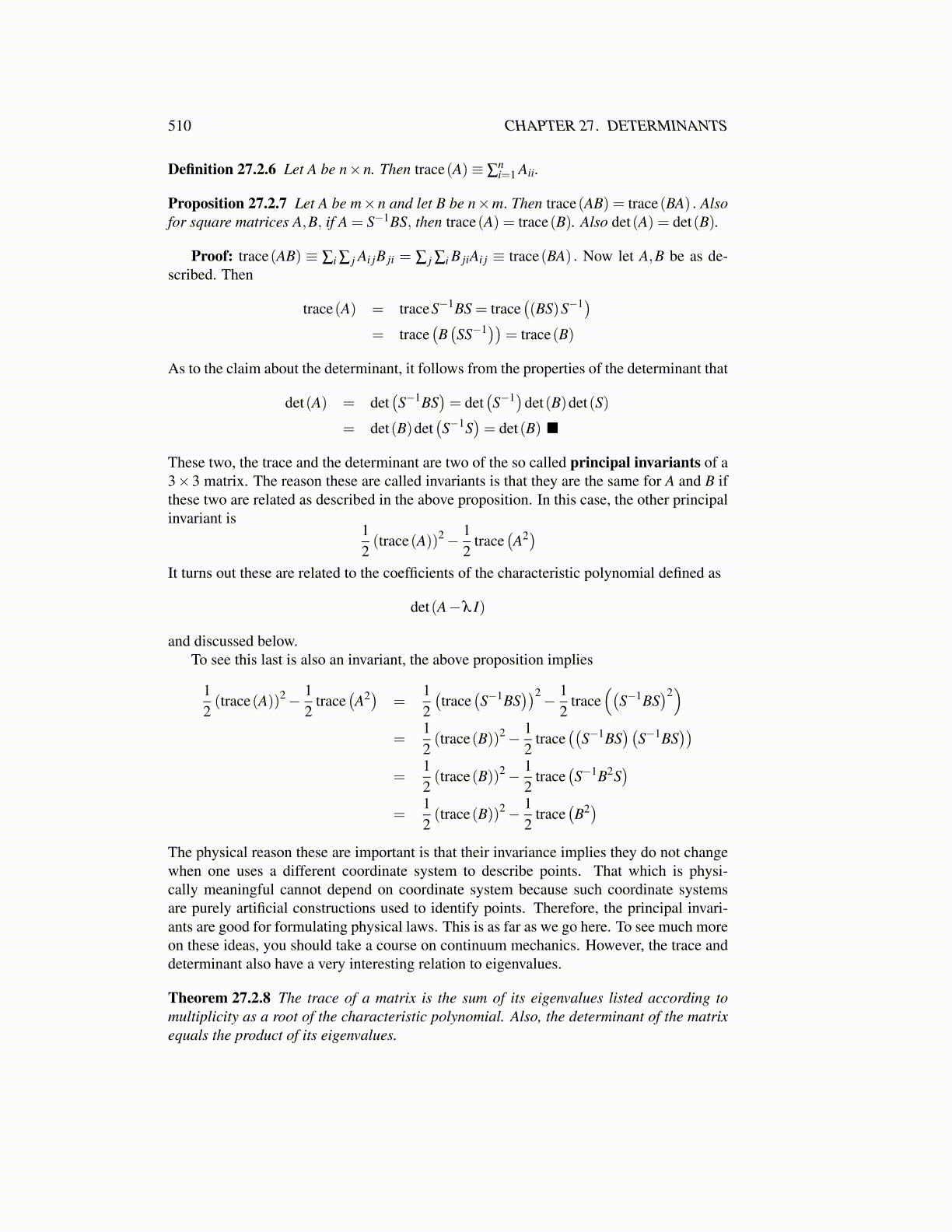
510 CHAPTER 27. DETERMINANTS
Definition 27.2.6 Let A be n×n. Then trace(A)≡ ∑ni=1 Aii.
Proposition 27.2.7 Let A be m×n and let B be n×m. Then trace(AB) = trace(BA) . Alsofor square matrices A,B, if A = S−1BS, then trace(A) = trace(B). Also det(A) = det(B).
Proof: trace(AB) ≡ ∑i ∑ j Ai jB ji = ∑ j ∑i B jiAi j ≡ trace(BA) . Now let A,B be as de-scribed. Then
trace(A) = traceS−1BS = trace((BS)S−1)
= trace(B(SS−1))= trace(B)
As to the claim about the determinant, it follows from the properties of the determinant that
det(A) = det(S−1BS
)= det
(S−1)det(B)det(S)
= det(B)det(S−1S
)= det(B) ■
These two, the trace and the determinant are two of the so called principal invariants of a3×3 matrix. The reason these are called invariants is that they are the same for A and B ifthese two are related as described in the above proposition. In this case, the other principalinvariant is
12(trace(A))2− 1
2trace
(A2)
It turns out these are related to the coefficients of the characteristic polynomial defined as
det(A−λ I)
and discussed below.To see this last is also an invariant, the above proposition implies
12(trace(A))2− 1
2trace
(A2) =
12(trace
(S−1BS
))2− 12
trace((
S−1BS)2)
=12(trace(B))2− 1
2trace
((S−1BS
)(S−1BS
))=
12(trace(B))2− 1
2trace
(S−1B2S
)=
12(trace(B))2− 1
2trace
(B2)
The physical reason these are important is that their invariance implies they do not changewhen one uses a different coordinate system to describe points. That which is physi-cally meaningful cannot depend on coordinate system because such coordinate systemsare purely artificial constructions used to identify points. Therefore, the principal invari-ants are good for formulating physical laws. This is as far as we go here. To see much moreon these ideas, you should take a course on continuum mechanics. However, the trace anddeterminant also have a very interesting relation to eigenvalues.
Theorem 27.2.8 The trace of a matrix is the sum of its eigenvalues listed according tomultiplicity as a root of the characteristic polynomial. Also, the determinant of the matrixequals the product of its eigenvalues.